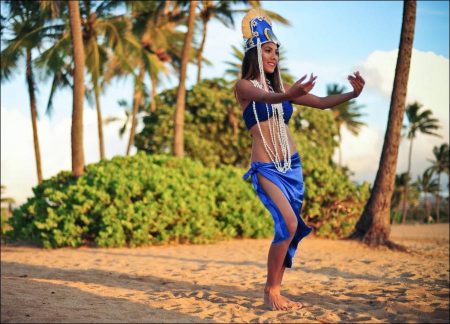One of the most widely recognized images of the islands is the world famous Tahitian dance. The ‘ote’a (sometimes written as otea) is a traditional dance from Tahiti, where the dancers, standing in several rows, execute figures. This dance, easily recognized by its fast hip-shaking and grass skirts, is often confused with the Hawaiian hula, a generally slower more graceful dance which focuses more on the hands and storytelling than the hips.
The ʻōteʻa is one of the few dances which existed in pre-European times as a male dance. On the other hand, the hura (Tahitian vernacular for hula), a dance for women, has disappeared, and the couple’s dance ‘upa’upa is likewise gone but may have reemerged as the tamure. Nowadays, the ʻōteʻa can be danced by men (ʻōteʻa tāne), by women (ʻōteʻa vahine), or by both genders (ʻōteʻa ʻāmui = united ʻō.).
The dance is with music only, drums, but no singing. The drum can be one of the types of the tōʻere, a laying log of wood with a longitudinal slit, which is struck by one or two sticks. Or it can be the pahu, the ancient Tahitian standing drum covered with a shark skin and struck by the hands or with sticks. The rhythm from the tōʻere is fast, from the pahu it is slower. A smaller drum, the faʻatete, can be used.
The dancers make gestures, reenacting daily occupations of life. For the men the themes can be chosen from warfare or sailing, and then they may use spears or paddles.
For women the themes are closer to home or from nature: combing their hair or the flight of a butterfly, for example. More elaborate themes can be chosen, for example, one where the dancers end up in a map of Tahiti, highlighting important places. In a proper ʻōteʻa the story of the theme should pervade the whole dance.
The group dance called ‘Aparima is often performed with the dancers dressed in pareo and maro. There are two types of ʻaparima: the ʻaparima hīmene (sung handdance) and the ʻaparima vāvā (silent handdance), the latter being performed with music only and no singing. Newer dances include the hivinau and the pa’o’a.
Visits: 409



